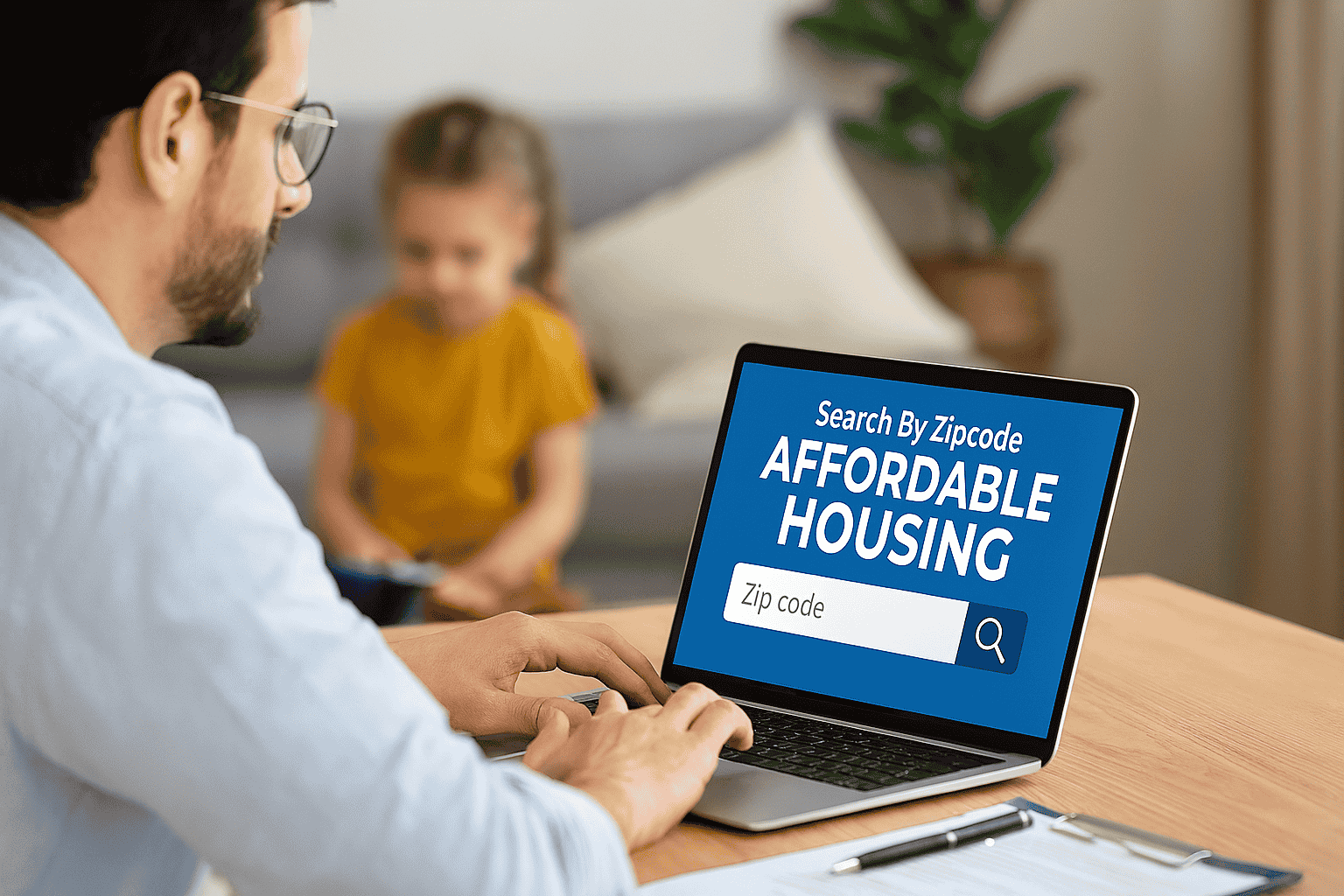Finding affordable housing in the U.S. can be overwhelming, especially when listings are scattered across multiple platforms and eligibility rules vary by location. Searching by zip code simplifies the process. It allows renters and buyers to focus on specific areas, compare options, and apply through verified channels.
This guide explains how to use location-based housing resources, what to expect during the application process, and how to stay updated as new units become available.
Where to Start Your Search
The most reliable place to begin is the U.S. Department of Housing and Urban Development (HUD). HUD offers a searchable map that lets you enter your zip code and view affordable housing opportunities nearby. You can filter by property type, income level, and accessibility features. The map includes public housing, Section 8 properties, and privately owned units that accept housing vouchers.
Another option is the HUD Resource Locator, which allows users to zoom into specific neighborhoods and view housing agencies, properties, and contact information. This tool is especially useful for identifying local offices that manage applications and waitlists.
For broader searches, platforms like AffordableSearch.com let users enter a zip code and expand the radius to nearby areas. These sites often include listings for senior housing, accessible units, and properties with flexible income thresholds.
Understanding Eligibility
Eligibility for affordable housing depends on income, household size, and local guidelines. Most programs use Area Median Income (AMI) as a benchmark. For example, a household earning less than 50% of the AMI may qualify for deeply subsidized units, while those earning up to 80% may qualify for moderate-income housing.
Some properties prioritize applicants based on age, disability status, or veteran status. Others may require participation in supportive services or employment programs. Always check the eligibility criteria listed with each property and confirm with the managing agency.
If you’re unsure whether you qualify, contact your local public housing agency. They can explain income limits, documentation requirements, and available programs in your zip code.
How to Apply
Once you’ve identified a property, follow the application instructions listed on the platform or agency site. Most applications require:
- Proof of income (pay stubs, tax returns, benefit statements)
- Identification for all household members
- Social Security numbers or alternative documentation
- Rental history and references
Some properties have open applications, while others use waitlists. Waitlists can be months or even years long, depending on demand. If a property is accepting applications, submit early and follow up regularly.
For properties with long waitlists, ask about alternative units or nearby locations with shorter timelines. Agencies may be able to refer you to other programs or properties within the same zip code.
Staying Informed
Affordable housing availability changes frequently. Units open up when tenants move, new developments are completed, or funding is renewed. To stay informed:
- Sign up for alerts from your local housing authority
- Bookmark and check HUD’s locator tools weekly
- Follow community action agencies and nonprofits on social media
- Ask about email lists or text alerts for new openings
Some cities also publish housing newsletters or maintain public dashboards showing current availability. These resources are especially useful in high-demand areas where listings fill quickly.
Tips for Navigating the Process
- Apply to multiple properties at once. Don’t wait for one application to be processed before starting another.
- Keep digital copies of your documents. Many platforms allow online uploads, and having files ready speeds up the process.
- Track your applications. Use a spreadsheet or notes app to record submission dates, contact names, and follow-up reminders.
- Be honest and thorough. Incomplete or inaccurate applications are often rejected or delayed.
If you’re facing eviction or urgent housing loss, ask about emergency rental assistance or transitional housing programs. These may be available through the same agencies that manage affordable housing listings.
Using Technology to Your Advantage
Affordable housing search tools are evolving. Some platforms now include filters for rent ranges, unit size, accessibility features, and proximity to transit. Others integrate with mapping apps to show nearby schools, clinics, and grocery stores.
Use these tools to compare neighborhoods, plan commutes, and identify properties that match your lifestyle and needs. Searching by zip code gives you control over location while still accessing verified listings.
Affordable housing is available, but finding it requires strategy, persistence, and the right tools. By searching by zip code, you can focus your efforts, avoid scams, and connect with agencies that manage real units. Use Affordable housing search tools once to locate properties, then follow through with applications and updates. With the right approach, you can secure stable housing that fits your budget and supports your long-term goals.


Leave a Reply